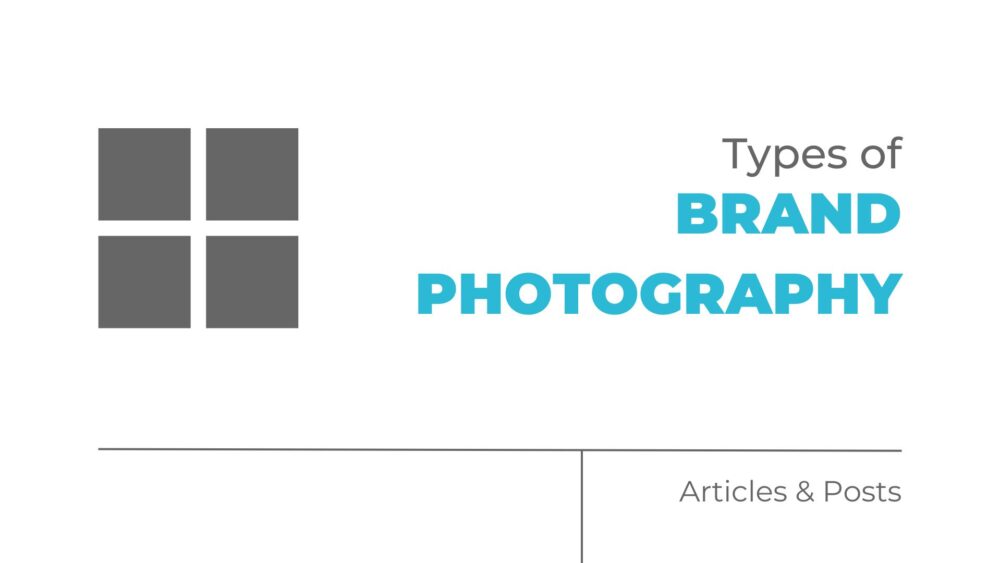Brand photography is an essential facet of marketing that breathes life into your brand identity and communicates your story to your audience.
Whether you’re launching a new product, revamping your website, or looking to engage more effectively on social media, getting to know the different types of brand photography is key.
It can really shake up your visual strategy.
From product shots that highlight the intricate details of your offerings to lifestyle imagery that connects emotionally with your viewers, each type of brand photography serves a unique purpose and reinforces your brand’s persona.
In this post, we will delve deep into each category, helping you decide which styles align best with your brand’s goals and values.
11 Types of Brand Photography
Brand photography can be broadly categorized into several types.
Each type serves unique purposes and highlights different aspects of a company:
Corporate Portraiture
Corporate portraiture is all about presenting the human face of an organization.
These portraits show everyone from top executives to team members at all levels, capturing the professional spirit of the company.
You often see these images in annual reports, on company websites, and displayed in office lobbies.
They help strengthen the company’s identity and build a connection with its audience.
Product Photography
Product photography aims to showcase items in the best light possible.
It highlights the product’s features, benefits, and potential uses.
By capturing images that entice consumers, it drives sales, making it a fundamental aspect of marketing and ecommerce.
Event Photography
From corporate galas to industry conferences, event photography is key in capturing the essence of corporate gatherings.
These images not only serve as a valuable resource for marketing and press releases but also help enhance a company’s historical archives.
They preserve significant moments that define its culture and values.
Lifestyle Photography
Lifestyle photography does more than just show off products.
It captures the lifestyle or culture a brand represents.
This approach works really well for brands linked to certain lifestyles or experiences.
It gives customers a peek into the life they could have by using the brand’s products.
Personal Brand Photography
Personal brand photography focuses on individuals, showcasing their personality, style, and professional essence.
It’s particularly useful for entrepreneurs, influencers, and professionals who are the face of their brand.
These images are often used across social media, personal websites, and marketing materials to build a personal connection with the audience.
Environmental Portraiture
This style merges portraiture with a documentary approach, placing subjects within contexts that narrate their role or the essence of their professional life.
Environmental portraiture is useful in magazines, professional websites, and social media where the environment adds depth to the individual’s story.
Behind-the-Scenes (BTS)
BTS (behind-the-scenes) photography offers an intimate glimpse into the making of a product or the execution of a service.
This adds a layer of authenticity and relatability to the brand.
These images allow consumers to connect on a more personal level by revealing the effort and reality behind the polished final offerings.
Architectural and Interior Photography
This type of photography showcases the spaces brands use, like modern corporate offices or busy retail stores.
It captures the design and feel of these places, which are important for branding and how customers see the brand.
Food Photography
Essential for anyone in the food industry, from restaurants to food bloggers, food photography is about creating a visual feast that tempts the taste buds.
Its goal is to attract food lovers with captivating representations of culinary treats.
Fashion Photography
Fashion photography is lively and colorful, displaying clothing and accessories in a way that captures the brand’s unique style and values.
It’s key for campaigns, lookbooks, and ads, as the way items are presented can strongly influence whether consumers are drawn to them.
Conceptual Photography
This style captures the brand’s key messages or philosophy using symbols and creative ideas.
It’s often abstract or artistic, making viewers think differently and connect more deeply with what the brand stands for.
How Can Businesses Decide Which Type of Brand Photography is Right for Them?
Choosing the right type of brand photography involves understanding the brand’s core message, the audience’s expectations, and the marketing goals.
Here are a few considerations to guide this decision:
Identify the Brand’s Personality
Is the brand more formal or laid-back?
Is it driven by innovation or tradition?
The answers to these questions can guide the style of photography.
Consider the Audience
Who are the brand’s primary customers?
A tech company might benefit more from BTS and conceptual photography, while a fashion brand would prioritize high – style product shots and lifestyle images.
Marketing Goals
Determine what the brand needs to communicate through the photos.
For product launches, detailed product photography might be essential.
For rebranding, a company might focus on lifestyle and environmental portraiture.
Brand Photography Cost
The cost of brand photography can vary significantly based on the style and scope of the project.
Businesses need to evaluate their budget and compare it against the potential return on investment from high-quality brand images.
At the End of the Day
By mixing up these different types of brand photography, companies can build a really versatile and eye-catching collection of visual content.
This makes it super easy to keep a consistent and clear marketing vibe that pops on all platforms — making sure they look sharp, feel confident, and really connect with their audience.
The importance of telling a story through pictures is becoming super pivotal in how brands talk to us.
Top-notch brand photography isn’t just a nice-to-have.
It’s a must-have part of nailing your marketing game, showing off what your company’s all about, and really making a splash in the market.


Comments are closed.